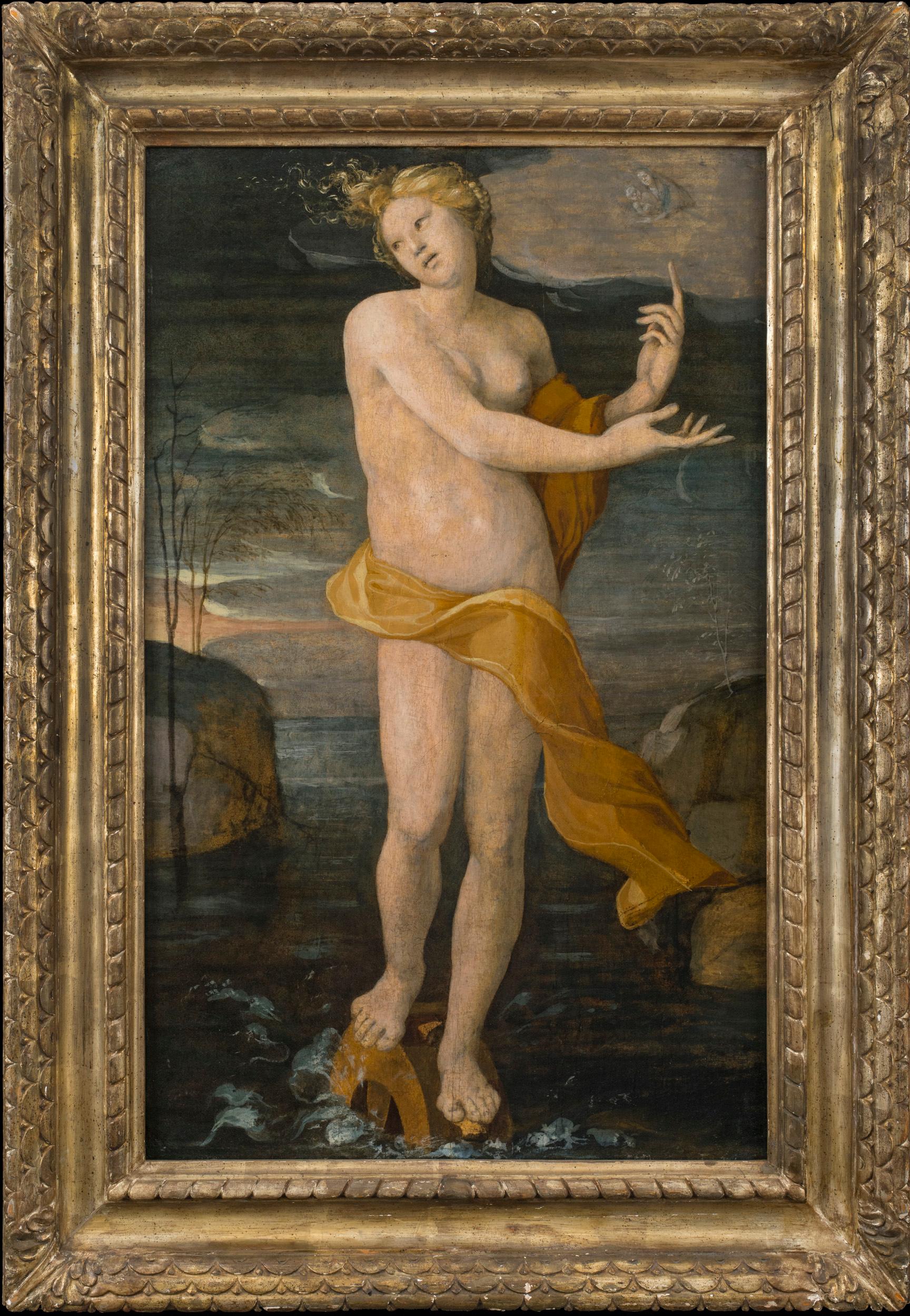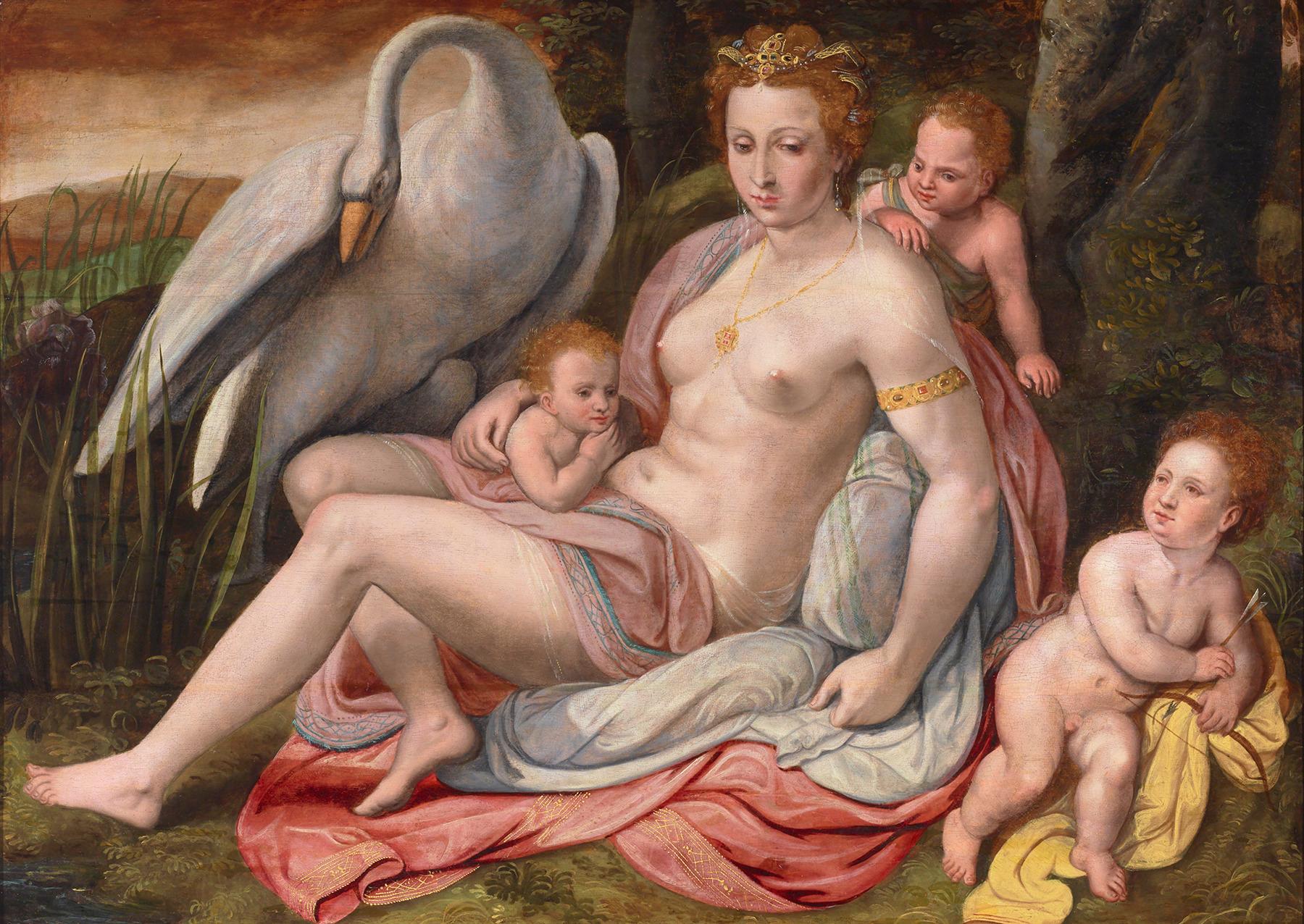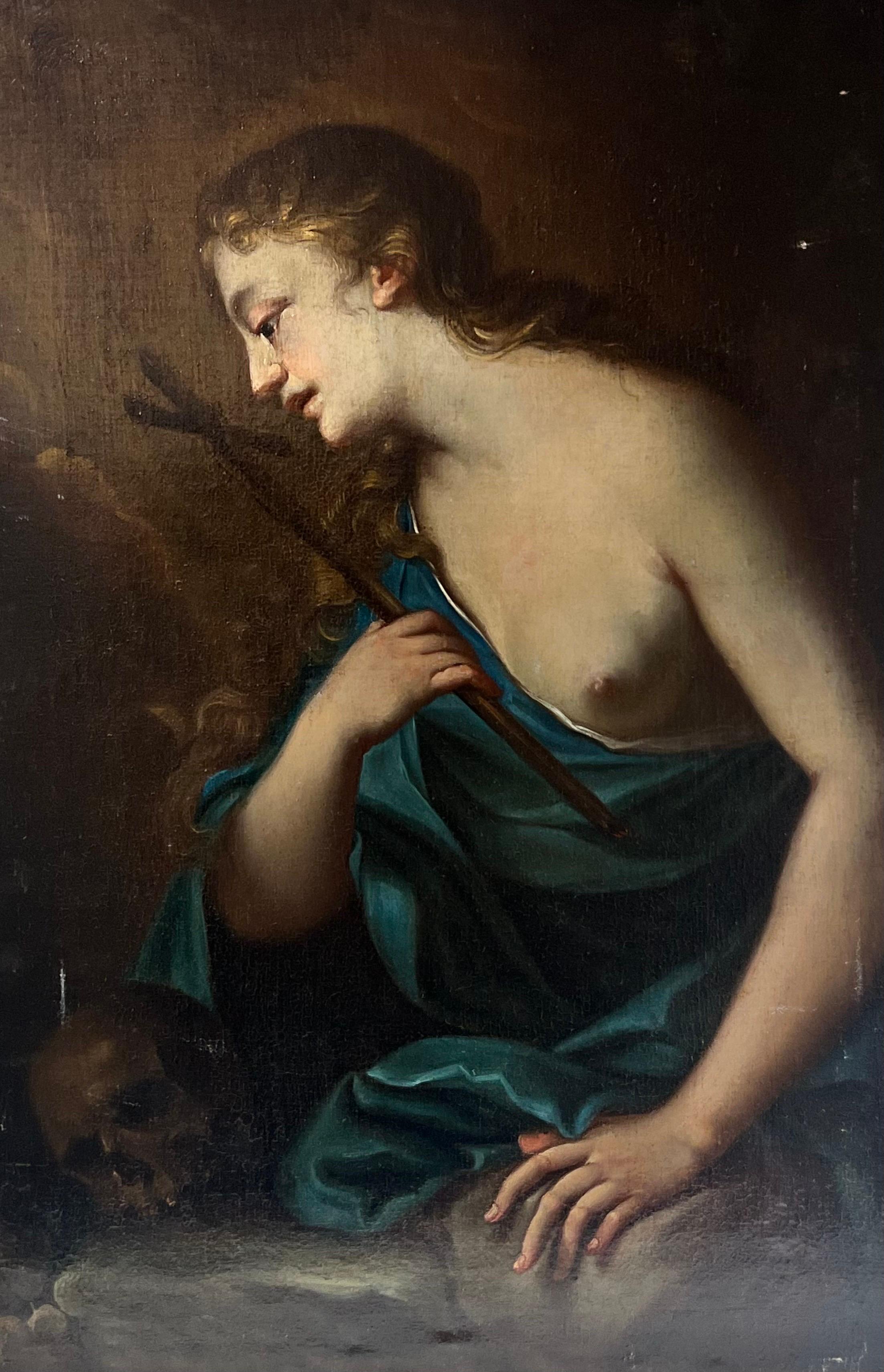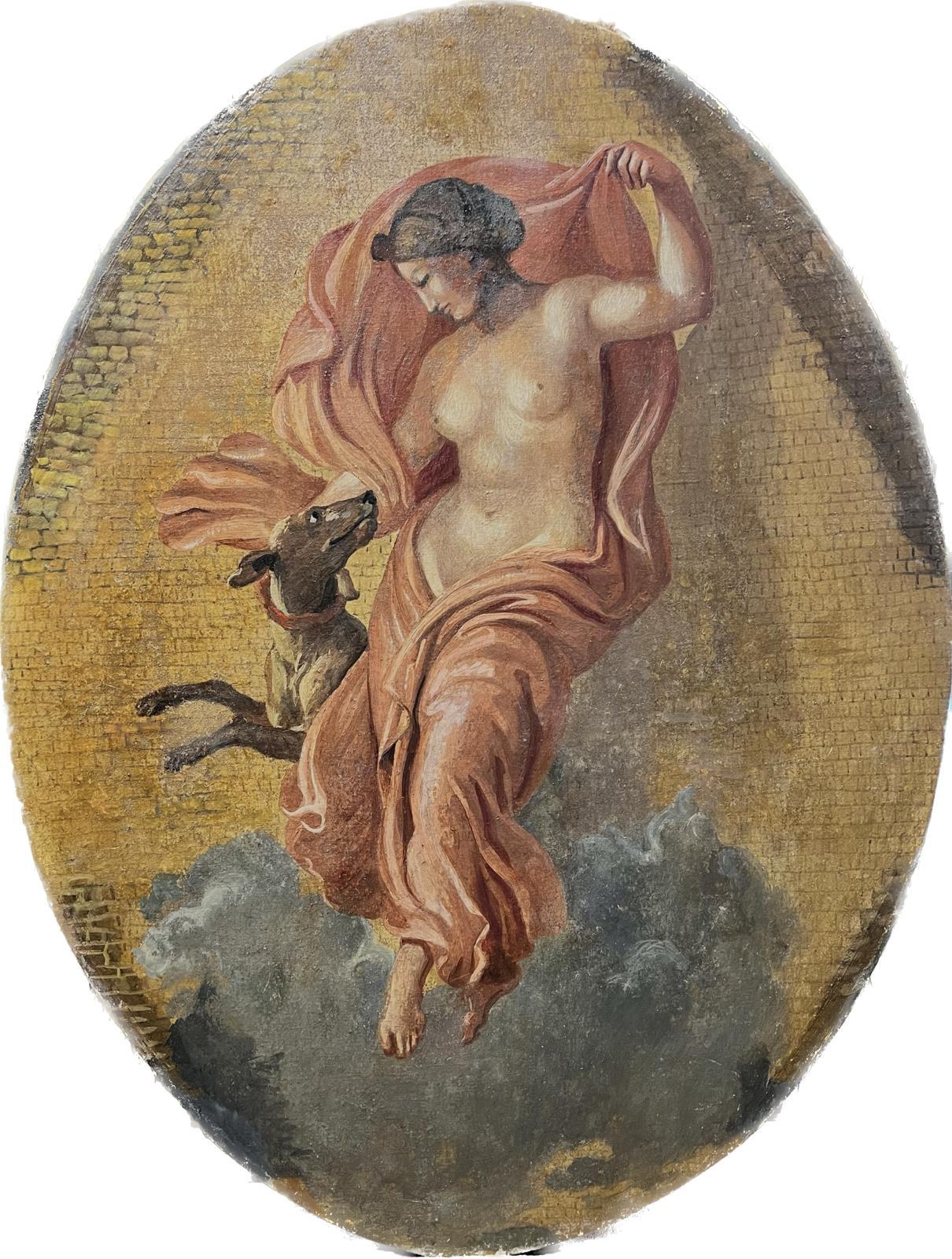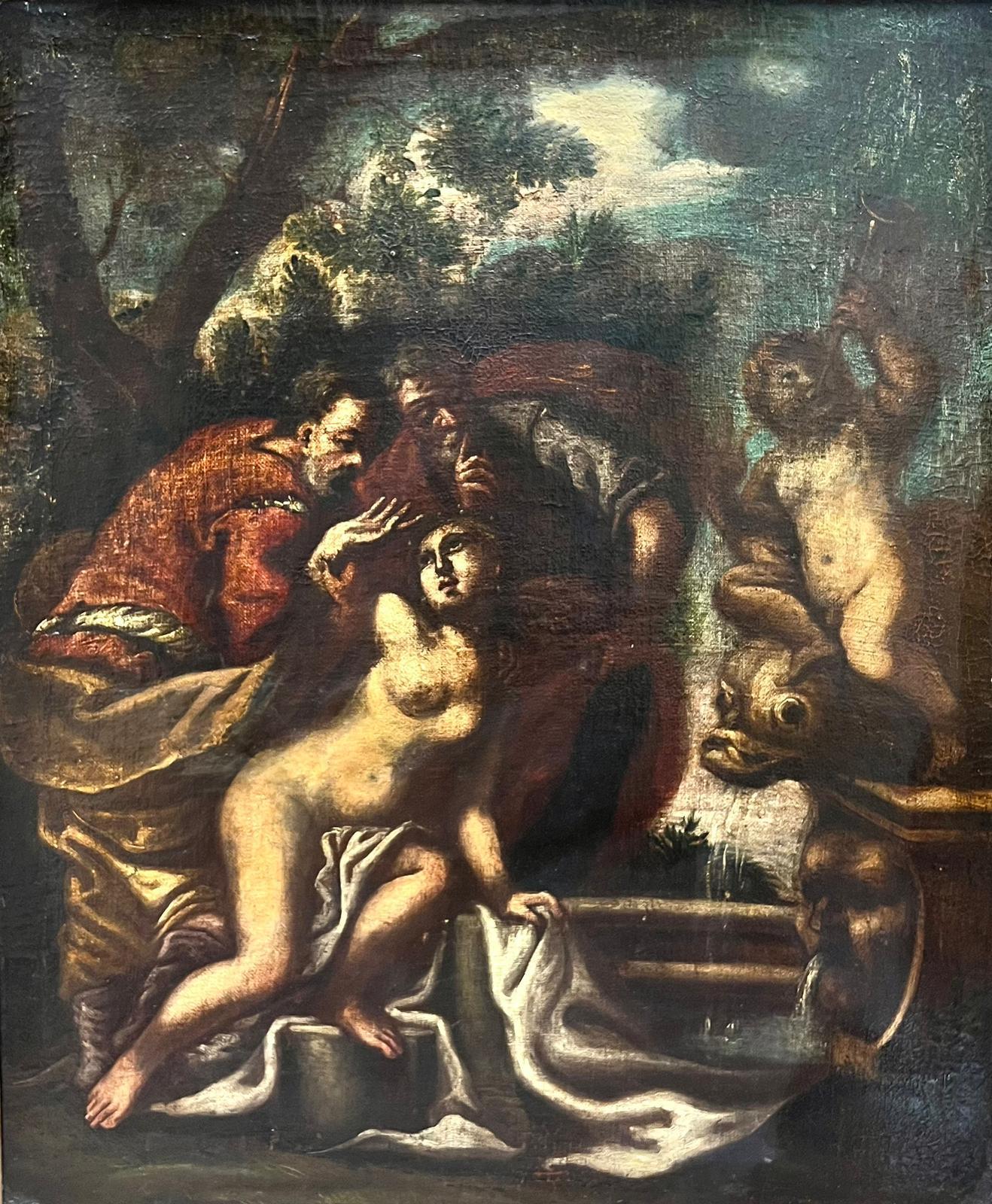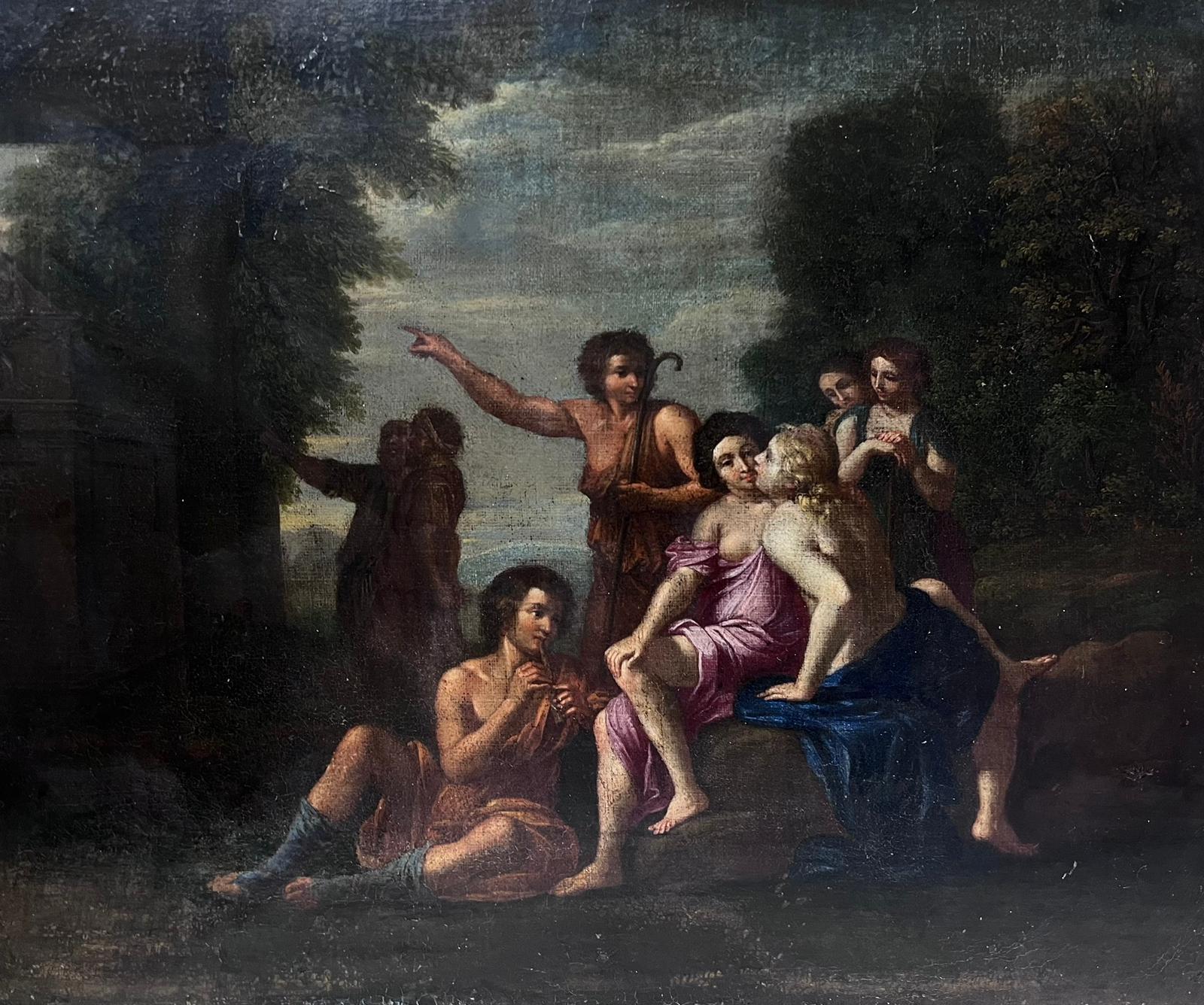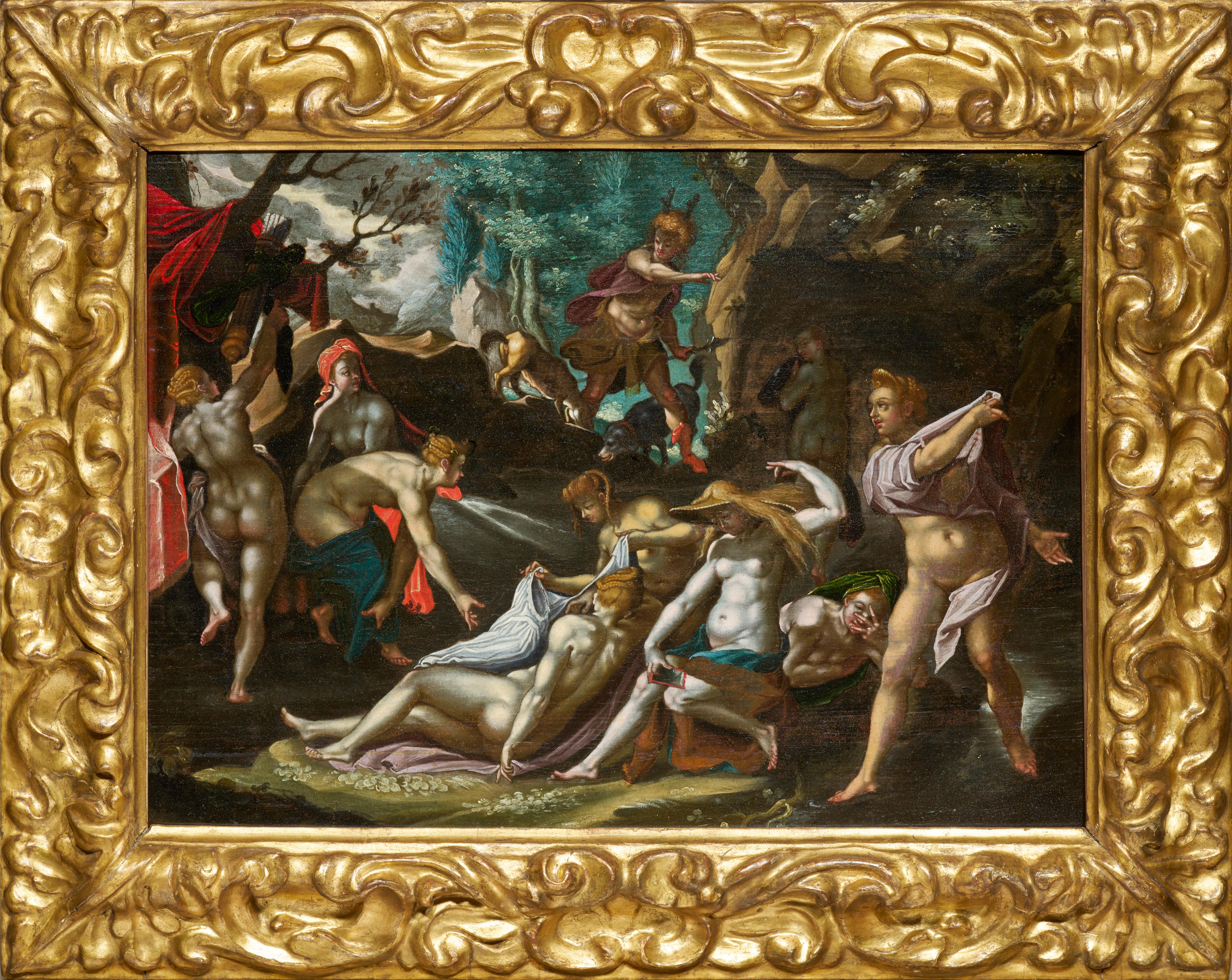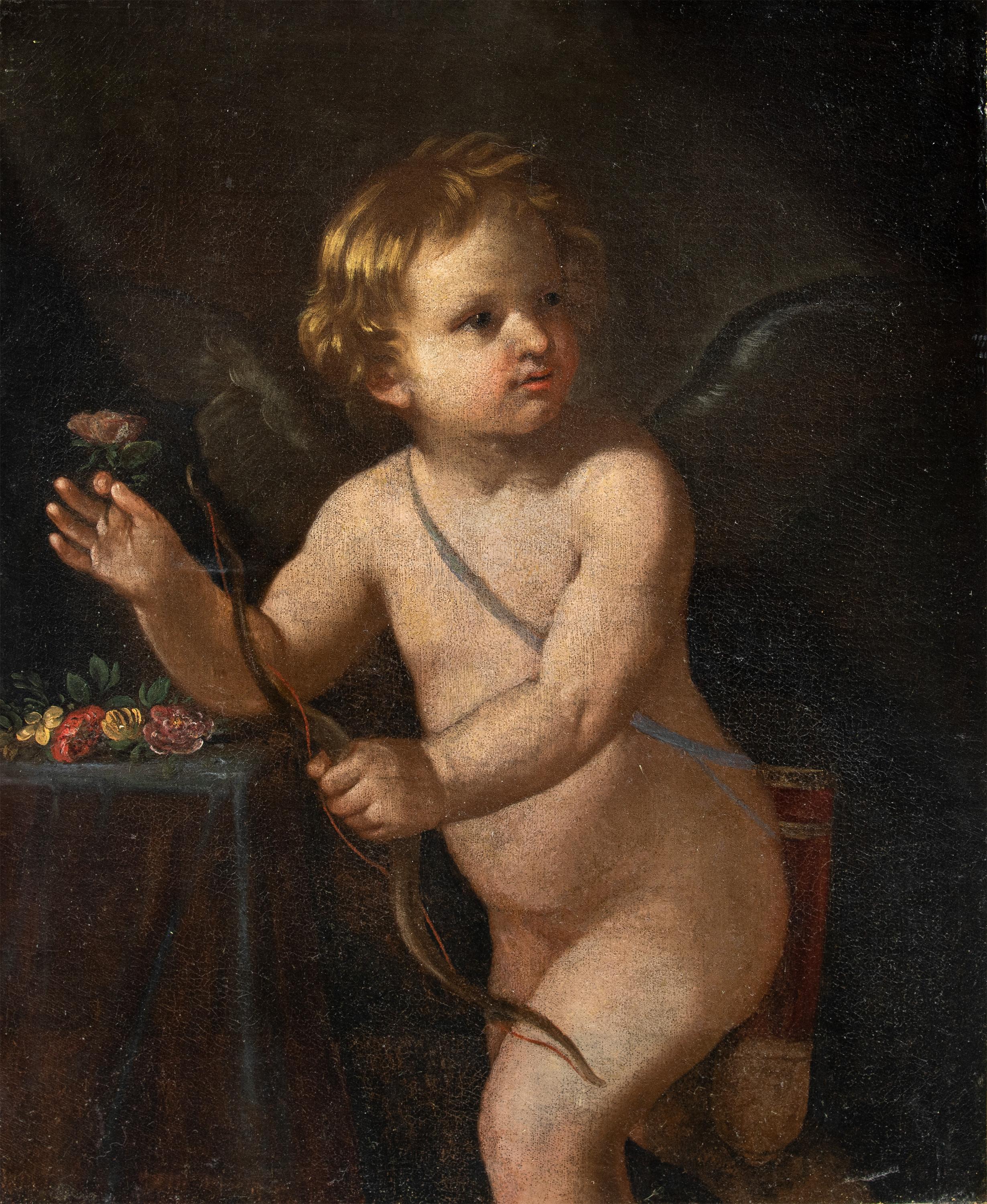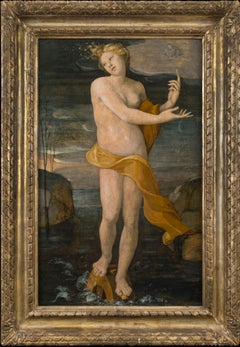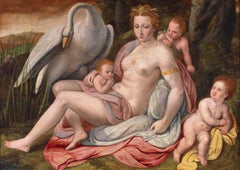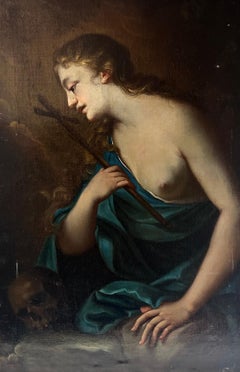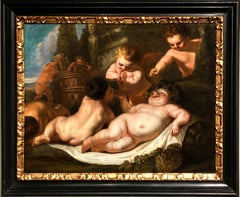
Bacchus Putti Oil on canvas Paint Art Old master Italy Quality 17th Century Roma
View Similar Items
Want more images or videos?
Request additional images or videos from the seller
1 of 13
Carlo CignaniBacchus Putti Oil on canvas Paint Art Old master Italy Quality 17th Century Roma1650-1699
1650-1699
About the Item
- Creator:Carlo Cignani (1628 - 1719, Italian)
- Creation Year:1650-1699
- Dimensions:Height: 23.23 in (59 cm)Width: 27.56 in (70 cm)
- Medium:
- Movement & Style:
- Period:
- Condition:
- Gallery Location:Riva del Garda, IT
- Reference Number:1stDibs: LU98815634901
About the Seller
4.8
Platinum Seller
These expertly vetted sellers are 1stDibs' most experienced sellers and are rated highest by our customers.
Established in 2017
1stDibs seller since 2018
200 sales on 1stDibs
More From This SellerView All
- Flowers Paint Oil on canvas Old master 17th Century Italy Still-life ArtLocated in Riva del Garda, ITMaster of the Grotesque Vase (active in Rome and Naples in the first quarter of the 17th century) Still life of flowers in a classic vase oil on canvas 66 x 51 cm, In frame cm. 82 x...Category
17th Century Old Masters Paintings
MaterialsOil
$7,600 Sale Price20% Off - Portrait Paint Oil on canvas Old master 16/17th Century Italian Raffaello ArtLocated in Riva del Garda, ITTuscan painter active towards the end of the 16th century Portrait of Captain Niccolò Orsini (Pitigliano, 1442 - Lonigo, 1510), count of Pitigliano and Nola. Tuscany, end of the 16th century Oil on canvas, 64 x 47 cm., Framed 89 x 73 cm. The portrait we present to you shows the effigy of a vigorous high-ranking male figure in armor, in the most typical Renaissance pose, half-length and taken in profile, with his face and gaze turned to the side; the serious and intense expression and the facial features evoke at first glance the portraiture of early Florentine mannerism. He is Niccolò III Orsini (Pitigliano, 1442 - Lonigo, 1510), count of Pitigliano and Nola and son of Aldobrandino Orsini, famous leader and captain (or capitano di ventura) who lived between the fifteenth and sixteenth centuries, who served for the state Pontifical in Naples and Florence and above all for the Republic of Venice. Portraiture with these characters, which derives from ancient coinage, was used in the sixteenth century in the sequences of Portraits of Illustrious Men, both in painting and in sculpture. The profile portrait was in fact a genre reserved, according to the Renaissance tradition, for celebrations, presenting those characteristics of imperturbability typical of the military role covered. Our painting is a work created by an author active in Tuscany towards the end of the sixteenth century, adhering to those pictorial styles made famous by the portraitist Cristofano di Papi dell'Altissimo (1530-1605), a pupil of Bronzino and then of Pontormo, known for having created a collection of about 500 portraits of illustrious men, known as the 'Gioviana Series' (now in the Uffizi Gallery); and among these it is possible to identify one dedicated to Niccolò Orsini. Our painting is inspired, in particular, by a print taken from the collection of prints...Category
16th Century Old Masters Paintings
MaterialsOil
- Landscape Crucifixion Christ Paint Oil on canvas Old master 17th CenturyBy Scipione Compagni, or Compagno (Naples, about 1624 - after 1680)Located in Riva del Garda, ITScipione Compagni, or Compagno (Naples, about 1624 - after 1680) Fantastic landscape with the Crucifixion of Christ on Mount Calvary Oil painting on canvas cm. 47 x 62 with antique frame cm. 63 x 78 cm. We present with great pleasure this rich representation, executed in the second half of the seventeenth century, whose stylistic and composition features reflect the stylistic features of the Neapolitan lesson: the warm colors, the lively chromatic range, the quick but precise brushstrokes are elements that lead us, in particular, to the hand of Scipione Compagno. It fits fully into the classic production of the Neapolitan painter, characterized by compositions filled with numerous figures, assembled with great formal elegance, where the painter re-elaborates the mannerist suggestions but in a theatrical key and consequently reaches an extremely refined Baroque vision of the narrative. The reminiscences with the painting of Filippo Angeli are evident, but above all the similarities with Domenico Gargiulo, known as Micco Spadaro, distinguished by elegant and precious chromatic accords, and with some references to Roman painting of the early seventeenth century. In the work, in fact, references to Roman and Neapolitan classicism are observed, with the bright and bright palette that we can trace back to the painter's mature works. The painting, characterized by a multitude of characters, shows the scene of the Crucifixion on Mount Calvary, where the three crosses stand out against the background illuminated by a clear light, in an almost otherworldly atmosphere of a mountainous river landscape in front of the city of Jerusalem. in the distance. Watching the dying Christ tortured we can see the three Marys, with the Virgin in red dress and blue cloak, surrounded by other women and soldiers, some of them on horseback, one of whom holds a spear with which he inflicted the wound in the side of Christ. In the foreground, again, numerous men, women and children, who attend the scene of the Crucifixion. The bright and clear colorism of the work in question is typical of Neapolitan painting...Category
17th Century Old Masters Paintings
MaterialsOil
$7,714 Sale Price20% Off - Landscape Village Market Paint Oil on canvas Old master 18th Century Flemish ArtBy Circle of Pieter van Bredael (Antwerp 1629 - 1719)Located in Riva del Garda, IT18th century Dutch school (circa 1700.) - Circle of Pieter van Bredael (Antwerp 1629 - 1719) A village square with a market scene oil on canvas, 78 x 108 cm., Framed 94 x 121 cm. Questa affascinante scena popolare con un brulicante mercato nella main piazza è un opera di un artist fiammingo attivo intorno al 1700: si tratta di un interesting spaccato di vita dailyiana di un piccolo villaggio dell’Olanda del Secolo d´Oro. Nella piazza brulicante di gente con sullo sfondo delle tipiche case ed una grande fontana zampillante, possiamo assistere al trambusto che ruota attorno al giorno di mercato, con figure di ogni estrazione sociale indaffarate nelle proprie attività. Anche is difficult to ricondurre la tela alla mano di un autore in particolare, data la predilezione di molti autori a questo genere di ricche composizioni, possiamo però avvicinarne l'esecuzione alla cerchia del pittore di Anversa Pieter van Bredael (Anversa 1629–1719). Van Bredael, che faceva parte di una grande famiglia di pittori, è registrato come allievo nella bottega di David Ryckaert III nel 1640. Dopo viaggi di studio nei Paesi Bassi e in Spagna divenne maestro della Gilda di San Luca ad Anversa nel 1651. Lavorò anche in Italia, soprattutto in Roma, dove venne strongly influenzato dallo stile compositivo del gruppo dei Bamboccianti. Era ben noto per le sue scene di mercato altamente fantasiose che illustravano lo spettro diversificato della vita dailyiana della città. I suoi dipinti di paesaggi sono caratterizzati da accenti di colori vivaci, spesso popolati da molte figure che non possono che evocare lo stile di Jan Brueghel il Vecchio. Vi mostriamo di seguito alcune operates dell’autore, con cui è agevole ravvisare stilistiche analogy e compositiva con il nostro dipinto. - Dorotheum, Vienne, Alte Meister...Category
18th Century Old Masters Paintings
MaterialsOil
$6,693 Sale Price20% Off - Portrait Woman Lady Delle Piane Paint Oil on canvas Old master 18th Century ArtBy Giovanni Maria delle Piane dit Mulinaretto (Genoa 1670 - Monticelli d´Ongina 1745)Located in Riva del Garda, ITThe beautiful portrait proposed, which represents a Genoese woman of high social origin and dressed in a sumptuous and elegant manner, illustrates the typical stylistic characteristics of the great Genoese portrait painter Giovanni Maria Delle Piane, called the Mulinaretto. Giovanni Maria delle Piane dit Mulinaretto (Genoa 1670 - Monticelli d´Ongina 1745), attributed Portrait of a noble Genoese nobleman Beginning of the 18th century Oil on canvas, 79 x 65 cm, In a beautiful carved and gilded wooden frame cm. 106 x 89 The noble lady displays a stern and proud expression, a smile which has just been mentioned but full of determination; the well-erected and authoritative pose is softened by the habit of the red ribbon woven in the hair, reminiscent of the brocade of clothes, according to an interpretive taste typical of Delle Piane. In the painting we appreciate the meticulous detail of the lace of the sleeves and fabrics on the neckline, the rich drapery of the dress, the contrast of colors between the golden threads of the embroidery and the iridescent red of the fabric that envelops the figure and that emerges from the the dark background. Finally, the pleasant conduction which characterizes the refined line is appreciated in the capacity to make the light glide on the clothes and the complexion of the woman. The artist, pupil of Giovanni Battista Gaulli...Category
18th Century Old Masters Paintings
MaterialsOil
$8,848 Sale Price20% Off - Landscape Nativity Religious Paint Oil on canvas Old master 17th Century ItalianBy Scipione Compagni, or Compagno (Naples, about 1624 - after 1680)Located in Riva del Garda, ITScipione Compagni, or Compagno (Naples, about 1624 - after 1680) Fantastic landscape with the Nativity of Christ and the appearance of the angel to the shepherds Oil painting on canvas cm. 47 x 62 with antique frame cm. 63 x 78 cm. We present with great pleasure this rich representation, executed in the second half of the seventeenth century, whose stylistic and composition features reflect the stylistic features of the Neapolitan lesson: the warm colors, the lively chromatic range, the quick but precise brushstrokes are elements that lead us, in particular, to the hand of Scipione Compagno. It fits fully into the classic production of the Neapolitan painter, characterized by compositions filled with numerous figures, assembled with great formal elegance, where the painter re-elaborates the mannerist suggestions but in a theatrical key and consequently reaches an extremely refined Baroque vision of the narrative. The reminiscences with the painting of Filippo Angeli are evident, but above all the similarities with Domenico Gargiulo, known as Micco Spadaro, distinguished by elegant and precious chromatic accords, and with some references to Roman painting of the early seventeenth century. In the work, in fact, references to Roman and Neapolitan classicism are observed, with the bright and bright palette that we can trace back to the painter's mature works. The painting depicts, in a mountainous river landscape, in front of a large ancient building that stands on a rock, the birth of Christ with Joseph and Mary, surrounded by numerous shepherds who have come to honor the sacred event. On the right in the foreground a multitude of other figures, some of which indicate the birth of Messiah with their hands. From the top of a blue sky a luminous glow that pierces the clouds gives way to a crowd of flying angels who spread rays of light; this glow, directed towards a small group of figures, serves to immortalize a very interesting detail, that is the apparition of the angel to the shepherds (Luke II, 8-14) to announce to them the birth of the Savior. "... here I announce to you a great joy, which will be of all the people: today a savior, who is Christ the Lord, was born to you in the city of David. This is the sign for you: you will find a child wrapped in swaddling clothes, lying in a manger ". The bright and clear colorism of the work in question is typical of Neapolitan painting...Category
17th Century Old Masters Paintings
MaterialsOil
$7,600 Sale Price20% Off
You May Also Like
- Allegory of FortuneLocated in New York, NYProvenance: S. Spinelli Collection, Florence; their sale, Galleria Pesaro, Milan, July 11-14, 1928, lot 112 (unsold); reoffered Galleria Luigi Bellini, Florence, April 23-26, 1934, lot 132, as manner of Baldassare Peruzzi Dr. Giacomo Ancona, Florence, 1930s, and after 1939, San Francisco; thence by descent to his son: Mario Ancona, San Francisco; thence by descent to his children: Mario Ancona III and Victoria Ancona, San Francisco, until 1995; thence to: Phyllis Ancona Green, widow of Mario Ancona, Los Angeles (1995-2012) Literature: Donato Sanminiatelli, Domenico Beccafumi. Milan 1967, p. 170 (under paintings attributed to Beccafumi) Among the precious survivors of Renaissance secular paintings for domestic interiors are several unusual and particularly attractive panels painted in Siena at the end of the fifteenth and beginning of the sixteenth centuries. These paintings depict exemplary figures from antiquity—heroes or heroines, as well as allegorical, literary, and mythological figures. For the most part, these panels have survived in groups of three, although it is possible that some of these works were painted either as part of larger series or as individual projects. One such trio by Beccafumi consists of two paintings now at the National Gallery, London (Marcia and Tanaquil) and a third in the Galleria Doria-Pamphilj, Rome (Cornelia). These were commissioned around 1517–1519 for the bedroom of Francesco di Camillo Petrucci in Siena and were most likely placed together as elements in the wall decoration (spalliere) or installed above the back of a bench or cassapanca. Another, earlier (ca. 1495–1500), set of three—Guidoccio Cozzarelli’s Hippo, Camilla, and Lucretia (Private Collection, Siena) survives with its original wooden framework—a kind of secular triptych. Judith, Sophonisba, and Cleopatra in the collection of the Monte dei Paschi, Siena, are by an anonymous artist close to Beccafumi called the “Master of the Chigi-Saracini Heroines.” Girolamo di Benvenuto’s Cleopatra, Tuccia, and Portia are dispersed (homeless, Prague, Chambery), and Brescianino’s Faith, Hope, and Charity are in the Pinacoteca Nazionale in Siena. The present painting first appeared in the Spinelli sale in Florence in 1934, at which time it was sold with two panels of identical size and format. Each was catalogued as being by the “manner of Baldassare Peruzzi” and of unidentified subject. Of these, the painting depicting a male figure turned to the right has recently reappeared in a private Italian collection, while the location of the third work, portraying a cloaked figure turned three-quarters left, remains unknown. Our panel depicts the allegorical figure of Fortune. Here she is represented in typical fashion as a nude female figure balanced on a wheel (sometimes called the Rota Fortunae), her billowing drapery indicating that she is as changeable as the wind. The appearance of the Virgin and Child in the cloud at the upper right is an unusual addition to the iconography. The subjects of the two pendant male...Category
16th Century Old Masters Paintings
MaterialsOil, Panel
- Leda And The Swan By Workshop Of Bartholomaeus SprangerLocated in New Orleans, LAWorkshop of Bartholomaeus Spranger 16th Century Flemish Leda and the Swan Oil on panel Retelling one of the most legendary Greco-Roman mythological tales, this exceptional oil on...Category
16th Century Old Masters Nude Paintings
MaterialsPanel, Oil
- 1700's French Old Master Oil Painting The Penitent Magdalene in the WildernessLocated in Cirencester, GloucestershireThe Penitent Magdalene French School, 18th century oil on canvas, unframed canvas : 33 x 21.5 inches provenance: private collection, France condition: very good and sound condition, ...Category
18th Century Old Masters Nude Paintings
MaterialsOil
- Fine Antique Classical Nude Draped in Robes Dancing with Dog Gold BackgroundLocated in Cirencester, GloucestershireArtist/ School: Italian School, 19th century Title: Classical nude draped in robes with dancing dog. The work looks as though it might have been a ceiling...Category
19th Century Old Masters Nude Paintings
MaterialsCanvas, Oil
- Venus and AdonisBy Baron Pierre Narcisse Guerin (workshop)Located in Paris, FRBaron Pierre Narcisse GUERIN (Circle of) 1774-1833 French Venus et Adonis (Venus and Adonis) Oil on canvas Canvas: 53" high x 39 1/2" wide Frame: ...Category
19th Century Old Masters Figurative Paintings
MaterialsCanvas, Oil
- CleopatraLocated in London, GBGabriel Revel was born in 1642 in the town of Chateau-Thierry in the province of Champagne. Although the name of his father is unknown, his profession was that of a ‘painter-glazer’ so the young Gabriel would no doubt have learnt the basic skills to become an artist in his father’s studio from an early age. Little is known of Revel’s early career however by 1671 he was working on the decorative schemes at Versailles and Gobelin under Charles le Brun, indicating his skill was great enough to be considered one of the finest artistic talents of the day. In 1683, Gabriel became a member of the Royal Academy after submitting his portraits of François Girardon and Michel Anguier. This success led to a number of commissions outside of Paris in the provinces, especially Dijon which he travelled to regularly until moving there permanently in 1692 after the death of Le Brun. Revel clearly took artistic influence from the fashions of the day using bold colours and fine detail to create highly decorative works. His Group Portrait, dated 1686 in the Portland Art Museum shows the central figure, much like the painting of Cleopatra in question, looking upwards wrapped in a rich blue drapery wearing jewel encrusted clothing. This type of decoration and composition would have had a base in Le Brun’s historical works and would almost certainly have been a style Revel developed whilst working on the decoration at Versailles. Whilst in Dijon, Gabriel painted virtually without competition and further circulated the style of historical painting popularized at Versailles by Le Brun. One of his most significant commissions in Dijon is the ceiling painting...Category
17th Century Old Masters Nude Paintings
MaterialsCanvas, Oil
Recently Viewed
View AllMore Ways To Browse
17th Century Strong Box
Bacchus Paintings
Pair Italian Cathedral
Carlo Cignani
Small Landscape Art
In The Wild
Painted Panel Century
Young America
Realist Oil Paintings
Old Family
American Traditional
In The Act
Oil Portrait With Frame
In The Mood
Lighted Panels
Oil Painting Red
Expressionist Oil Painting
Open Studio
